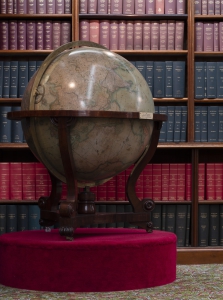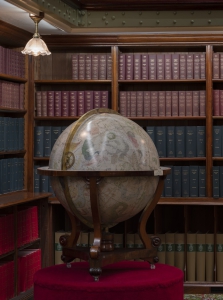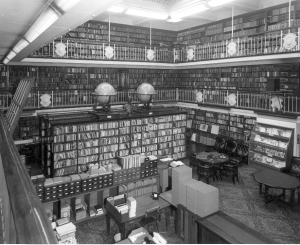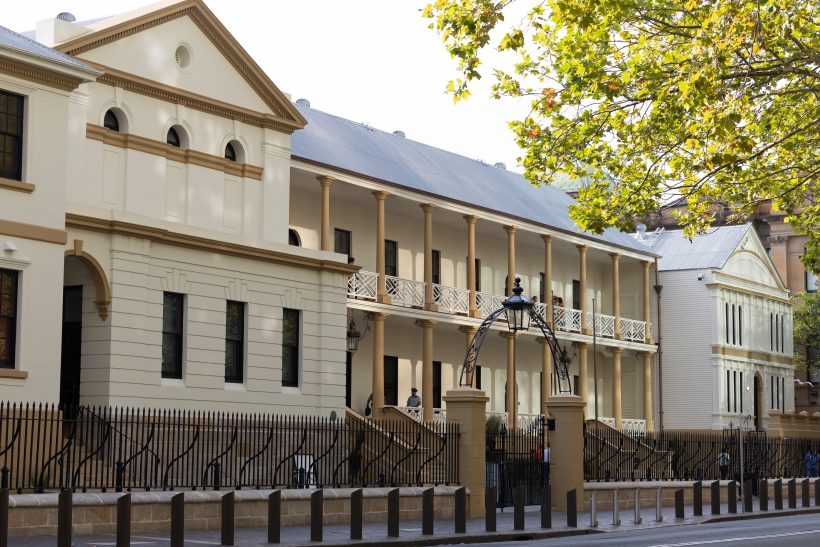Terrestrial and Celestial Globes
The terrestrial and celestial globes were purchased by the Parliamentary Library of NSW in 1868 and 1871 respectively, for parliamentarians and other library users to use as a reference. The purchase was arranged by the Agent-General for NSW in London, William Colburn Mayne (22 July 1808 – 31 August 1902).
 |
 |
| Terrestrial Globe | Celestial Globe |
The terrestrial globe depicts the map of earth while the celestial globe depicts the star constellations relative to their locations in the sky. The terrestrial globe was ordered from
London firm De La Rue & Co in August 1868 and made by Edward Stanford. The celestial globe was ordered in London in 1871 in a similar style, probably also made
by Edward Stanford, using a map created by Malby & Co. Thomas Malby was an acclaimed and famous globemaker of the early nineteenth century.
The celestial globe depicts the constellations with interpretive drawings harking back to the origins of their names rather than simple star points – the constellation of Sagittarius, for example, is overlaid with a depiction of a centaur archer, referencing the centaur Chiron of ancient Greek mythology.
The globes have been a longstanding part of the Parliamentary Library collection, first located in the library rooms beside each chamber. They first went on display in 1905 in the newly opened ‘Main Library’, now known as the Jubilee Room. Pictured below are the globes atop the Jubilee Room bookshelves in 1963.




